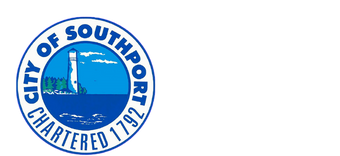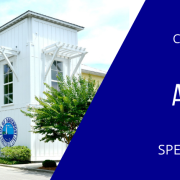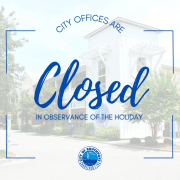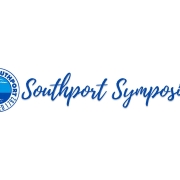
1010 N. Howe Street, Southport, NC 28461
OFFICE HOURS | Monday – Friday, 7:00 AM – 4:00 PM
Contact us at (910) 457-7935 (including after-hours emergencies)
UPCOMING MEETINGS

All backflow prevention devices are required to be re-tested annually by a third party.
Notice of Requirement of Backflow Prevention Devices
All irrigation meters in the City of Southport are required to have a backflow prevention device. This device is designed to ensure potable water provided by the City remains safe throughout the water distribution system.
New irrigation meters (and existing irrigation meters that have been removed or turned off) should follow the following procedures.
If a new meter is requested for irrigation, the customer will need to contact the City of Southport to request an irrigation tap.
Once the irrigation tap is installed by the City of Southport, the customer will then contact a plumber to install the backflow prevention device. Once the device is installed, the customer will notify the City of Southport and the device will be inspected by a County certified inspector (at the City’s cost). Once the inspection is complete and the device is approved, the county will send results to the City and the City will install the irrigation meter.
After the meter is installed, the customer must have the backflow prevention device tested for proper operation by a 3rd party certified backflow tester prior to using the meter. The cost for this testing is the responsibility of the customer. When this testing is complete, the report should be forwarded to the City by the customer. Once the report is received indicating the device passed testing, the water will be turned on by Public Works Department.
All backflow prevention devices are required to be re-tested annually by a third party.
Please note these measures are not only required by the City, they are in place to ensure the safety of our water supply.
Local Certified Backflow Testers:
- Backflow Safety, Kure Beach: 910-470-3233
- J. Rodriguez, Wilmington: 910-264-1357
- Michael Turner, Southport: 910-218-1454
- Sunny Wright, Brunswick County: 910-880-4178
- 24/7 Backflow Services, Salisbury: 704-431-5644
Municipal Sewer Use Ordinance
Each year there are more than 15,000 sewer overflows in North Carolina. Many of these overflows are directly related to the improper disposal of oil and grease in kitchen drains. Grease congeals on sewer pipes, which causes wastewater to flow back into homes and businesses or directly into waterways.
Discharging oil and grease into municipal sewer pipes is 100% preventable. For further information on Southport’s municipal sewer use ordinance, contact David Fox at (910) 457-7958 or (910) 457-7935. You can make a difference!
Fats, Oil, and Grease (FOG) Beat the Grease Goblin!
Did you know that most sanitary sewer backups occur between your home and the town’s sewer main? You can help prevent a costly and unsanitary overflow by following a few simple steps.
DO:
- Scrape excess grease in a container and dispose of it in the garbage.
- Place food scraps in waste containers or garbage bags for disposal with solid wastes, or start a compost pile; promote the use of scraping ware prior to washing.
- Place a wastebasket in the bathroom to dispose of solid wastes. Disposable diapers, condoms, and personal hygiene products do not belong in the sewer system.
- Promote the concept of “3 R’s”: Reduce, Reuse, Recycle.
DO NOT:
- Pour grease, fats, and oils from cooking down the drain.
- Use the toilet as a wastebasket.
- Use the sewer as a means of disposing of food scraps.

Justin Taylor
Cross Connect/Backflow ORC
Email
(910) 368-3288
Become a Backflow Prevention Assembly Tester for City of Southport


Electric Service Rates
Rates Effective July 2023
Residential:
Base Rate: $23.00/month
Rate Code: $/kWh
SR0: $0.127
SR1: $0.117
SR2: $0.107
SR3: $0.097
SR4: $0.087
Commercial:
Base Rate: $25.50/month
Rate Code: $/kWh
SC0: $0.127
SC1: $0.117
SC2: $0.107
SC3: $0.097
SC4: $0.087
Commercial Demand:
Base Rate: $75.00/month
Usage: $0.05710/kWh
CP Demand: $32.72/kW
Excess: $2.50/kW (NCP-CP)
Large Commercial Demand:
Base Rate: $75.00/month
Usage: $0.05980/kWh
CP Demand: $26.00/kW
Excess: $4.00/kW (NCP-CP)
Rooftop Solar Rates
BUY ALL/SELL ALL
Base Rate: $23.00/month + $3.75
Rate Code: $/kWh
SP15: $0.0665
NET METERED
Base Rate: $28.00/month
Rate Code: $/kWh
SP30: $0.125*
*Load Management Program is applicable


It is possible to save on your electric bill by having a load management switch installed on your electric water heater, central air conditioning system, or heat pump heating/cooling systems.
- There is no cost to install a switch.
- Water heaters are controlled 12 months of the year.
- Air conditioning units are usually controlled from May through October.
- All load management switches are installed by a licensed electrician.
- If you disconnect your load management switch, your electric rate will revert to a higher rate.
Ordinance amending Chapter 19
Article V, of the Southport City Code, Article V. Electrical Service
Sec. 19-186. Load Management.
(a) The building contractor or his plumbing or electrical sub-contractor shall place a Load Management switch provided by the City on all Electric water heaters 40 gallons or larger, as long as they are no more than 9kW, installed in new residential structures before a Certificate of Occupancy is issued. (April 12, 2018)
(b) The building contractor or his HVAC or electrical sub-contractor shall place Load Management switches provided by the City on all compressor and heat strip circuits on all standard 240V Electric Heat Pumps or HVAC units installed in new residential structures (“mini-split” heat pump units and geothermal systems are exempt) before a Certificate of Occupancy is issued. (April 12, 2018)
(c) Property owners, when making application for electrical service to an existing residential property, shall permit installation of load management switches if not already installed and functioning on all compressor and heat strip circuits, on all standard two hundred forty volt (240V) electric heat pumps or HVAC units (“mini-split” heat pump units and geothermal systems are exempt) and on all electric water heaters forty (40) gallons or larger provided they are no more than nine (9) kilowatts before an electrical service account will be granted. (June 11, 2020)
Load Management FAQ
What is Load Management?
Load Management is a practice of shedding loads (turning things off) at critical times when wholesale electricity is at a premium cost to municipalities.
Load Control Devices are installed on consumer and commercial loads that enable the power agency (North Carolina Eastern Municipal Power Agency) to control those loads to assist participating municipalities save on power costs.
What is a Load Control Device
A remote switch, connected via Wi-Fi, or other means, to the power agency. Participants are required to maintain a Wi-Fi connection to the thermostats so that the power agency can control them at peak power times.
How long is my AC condenser cycled off?
Around 15 minutes, twice each hour.
Why does the City of Southport want to control my air conditioner?
To help reduce the City’s demand electric cost.
How does the City’s Load Management Program benefit me and why should I participate?
Participants receive an incremental 1¢/kWh discount on each Load Management tier of participation. A customer with AC, Heat Strip, and Water Heater control pays 9.5¢/kWh (as opposed to 12.5¢).
Participants also get many perks from the smart thermostats such as phone apps and internet connectivity. Imaging coming home early on a hot day and being able to adjust your thermostat down before you get home!
Like other smart thermostats, they are fully programmable with temperature pre-sets based on participants’ work schedules, vacations, etc.
Who is required to have a load management device?
Everyone, under the ordinances of 2018 and 2020. The use of Load Management is now required on all new construction and for all new accounts. For anybody else that isn’t signed up, opting in is still voluntary.
Can I opt out of this program?
Participants with City issued Smart Thermostats may opt out of individual events.
What if I want to opt out? What circumstances allow me to opt out?
If someone with Asthma or COPD had an issue with running Load Management, there may be an exception that can occur. At the very least, participants should be able to have Load Management on their water heater.
Can I opt in to enroll just my water heater and/or just my HVAC system?
Some customers have mini-split AC units that we cannot control. We also cannot control any “instant” water heaters.
What does this device look like and where is it located?
The newest switches are rectangular, about 4-1/2 X 8 inches, and can be found in close proximity to water heaters and HVAC equipment.
Are there other options?
The City offers the EcoBee 3 Lite and the EcoBee 4 smart thermostats. The City issues them as an alternative for citizens to be Load Management compliant without installing the usual device control switches.
For this option, participants are responsible for the installation of the smart thermostats within 60 days.
Load Management Participation Form

While mosquitoes cannot be eliminated, it is important to control mosquitoes. They are a known disease “vector” meaning they can transmit some diseases to humans. Even mosquitoes that do not transmit disease can be a nuisance in their biting behavior. In severe instances, it can be detrimental to the city’s quality of life.
Mosquito Vector Control:
David Kelly | Tel: (910) 457-7935
Email
Mosquito Life Cycle
Brunswick County has 47 different mosquito species. Learn more about the mosquito species in Brunswick County.
Knowing the different stages of the mosquito’s life will help you prevent mosquitoes around your home and help you choose the right pesticides for your needs, if you decide to use them. All mosquito species go through four distinct stages during their life cycle:
- Egg – hatches when exposed to water.
- Larva – (plural: larvae) “wriggler” lives in water; molts several times; most species surface to breathe air.
- Pupa – (plural: pupae) “tumbler” does not feed; stage just before emerging as adult.
- Adult – flies short time after emerging and after its body parts have hardened.
The first three stages occur in water, but the adult is an active flying insect. Only the female mosquito bites and feeds on the blood of humans or other animals.
- After she obtains a blood meal, the female mosquito lays the eggs directly on or near water, soil and at the base of some plants in places that may fill with water. The eggs can survive dry conditions for a few months.
- The eggs hatch in water and a mosquito larva or “wriggler” emerges. The length of time to hatch depends on water temperature, food and type of mosquito.
- The larva lives in the water, feeds and develops into the third stage of the life cycle called, a pupa or “tumbler.” The pupa also lives in the water but no longer feeds.
- Finally, the mosquito emerges from the pupal case after two days to a week in the pupal stage.
- The life cycle typically takes up two weeks, but depending on conditions, it can range from 4 days to as long as a month.
The adult mosquito emerges onto the water’s surface and flies away, ready to begin its lifecycle.

Mosquito Spraying
PCT 3+15 ULV is the current product used to manage adult mosquito populations by the city. Our mosquito sprayers are equipped with Smart Flow Technology, providing the driver with increased treatment flexibility, while improving the accuracy of each application. As a precautionary measure, people and pets should go indoors when they see the mosquito sprayer coming.
Typical spray times are between 7:30 p.m. to 11:00 p.m. depending on weather conditions.
There are 5 spray zones in Southport.
Zone 1 (West side of Howe Street) is from West 9th Street to West Bay Street. That includes Indigo Plantation & Cottage Point.
Zone 2 (East side of Howe Street) is from East Leonard Street to East Bay street. That includes The Hammocks, The Landing, Harbor Oaks, & Turtle Wood.
Zone 3 (East side of Howe Street) is from Stuart Ave to East Leonard Street. Includes Park Ave Ext., Highland Park Ave and Price’s Creek.
Zone 4 (West side of Howe Street) is from West 9th Street to West 14th Street. That includes The Ridge & Cades Cove.
Zone 5 is Rivermist
Register your Beehives

Mosquito Prevention Tips for Your Home
Knowing the different stages of the mosquito’s life will help you prevent mosquitoes around your home and help you choose the right pesticides for your needs, if you decide to use them. All mosquito species go through four distinct stages during their life cycle:
- Egg – hatches when exposed to water.
- Larva – (plural: larvae) “wriggler” lives in water; molts several times; most species surface to breathe air.
- Pupa – (plural: pupae) “tumbler” does not feed; stage just before emerging as adult.
- Adult – flies short time after emerging and after its body parts have hardened.
The first three stages occur in water, but the adult is an active flying insect. Only the female mosquito bites and feeds on the blood of humans or other animals.
- After she obtains a blood meal, the female mosquito lays the eggs directly on or near water, soil and at the base of some plants in places that may fill with water. The eggs can survive dry conditions for a few months.
- The eggs hatch in water and a mosquito larva or “wriggler” emerges. The length of time to hatch depends on water temperature, food and type of mosquito.
- The larva lives in the water, feeds and develops into the third stage of the life cycle called, a pupa or “tumbler.” The pupa also lives in the water but no longer feeds.
- Finally, the mosquito emerges from the pupal case after two days to a week in the pupal stage.
- The life cycle typically takes up two weeks, but depending on conditions, it can range from 4 days to as long as a month.
The adult mosquito emerges onto the water’s surface and flies away, ready to begin its lifecycle.

In order to better serve the public and prevent backflow, the City of Southport has passed a Municipal Sewer Use Ordinance.
Sec. 19-94. – Objectives.
The objectives of this article are:
(1) To prevent the discharge of pollutants into the wastewater disposal system which will interfere with the operation of the system or contaminate the resulting sludge.
(2) To prevent the discharge of pollutants into the wastewater disposal system which will pass through the system, inadequately treated, into receiving waters or the atmosphere or otherwise be incompatible with the system.
(3) To improve the opportunity to recycle and reclaim wastewaters and sludges from the system.
(4) To provide for equitable distribution of the cost of the wastewater disposal system.


2021 Annual Drinking Water Quality Report City of Southport
Water System Number: NC 0410010
We are pleased to present to you this year’s Annual Drinking Water Quality Report. This report is a snapshot of last year’s water quality. Included are details about your source(s) of water, what it contains, and how it compares to standards set by regulatory agencies. Our constant goal is to provide you with a safe and dependable supply of drinking water. We want you to understand the efforts we make to continually improve the water treatment process and protect our water resources. We are committed to ensuring the quality of your water and to providing you with this information because informed customers are our best allies. If you have any questions about this report or concerning your water, please contact Mark Caban at 910-363-1002. We want our valued customers to be informed about their water utility. If you want to learn more, please attend any of our regularly scheduled meetings. The City of Southport Board of Aldermen meet once a month on the second Thursday of every month. The meeting is held in the Southport Community Building, 223 E. Bay Street at 6 p.m.
What EPA Wants You to Know
Drinking water, including bottled water, may reasonably be expected to contain at least small amounts of some contaminants. The presence of contaminants does not necessarily indicate that water poses a health risk. More information about contaminants and potential health effects can be obtained by calling the Environmental Protection Agency’s Safe Drinking Water Hotline (800-426-4791).
Some people may be more vulnerable to contaminants in drinking water than the general population. Immuno-compromised persons such as persons with cancer undergoing chemotherapy, persons who have undergone organ transplants, people with HIV/AIDS or other immune system disorders, some elderly, and infants can be particularly at risk from infections. These people should seek advice about drinking water from their health care providers. EPA/CDC guidelines on appropriate means to lessen the risk of infection by Cryptosporidium and other microbial contaminants are available from the Safe Drinking Water Hotline (800-426-4791).
If present, elevated levels of lead can cause serious health problems, especially for pregnant women and young children. Lead in drinking water is primarily from materials and components associated with service lines and home plumbing. The City of Southport is responsible for providing high quality drinking water, but cannot control the variety of materials used in plumbing components. When your water has been sitting for several hours, you can minimize the potential for lead exposure by flushing your tap for 30 seconds to 2 minutes before using water for drinking or cooking. If you are concerned about lead in your water, you may wish to have your water tested. Information on lead in drinking water, testing methods, and steps you can take to minimize exposure is available from the Safe Drinking Water Hotline or at http://www.epa.gov/safewater/lead.
The sources of drinking water (both tap water and bottled water) include rivers, lakes, streams, ponds, reservoirs, springs, and wells. As water travels over the surface of the land or through the ground, it dissolves naturally-occurring minerals and, in some cases, radioactive material, and can pick up substances resulting from the presence of animals or from human activity. Contaminants that may be present in source water include microbial contaminants, such as viruses and bacteria, which may come from sewage treatment plants, septic systems, agricultural livestock operations, and wildlife; inorganic contaminants, such as salts and metals, which can be naturally occurring or result from urban storm-water runoff, industrial or domestic wastewater discharges, oil and gas production, mining, or farming; pesticides and herbicides, which may come from a variety of sources such as agriculture, urban storm-water runoff, and residential uses; organic chemical contaminants, including synthetic and volatile organic chemicals, which are by-products of industrial processes and petroleum production and can also come from gas stations, urban storm-water runoff, and septic systems; and radioactive contaminants, which can be naturally-occurring or be the result of oil and gas production and mining activities.
In order to ensure that tap water is safe to drink, EPA prescribes regulations that limit the number of certain contaminants in water provided by public water systems. FDA regulations establish limits for contaminants in bottled water, which must provide the same protections for public health.
When You Turn on Your Tap, Consider the Source
The water that is used by this system is surface water from the Cape Fear River and groundwater, purchased from and treated by Brunswick County.
Source Water Assessment Program (SWAP) Results
The North Carolina Department of Environmental Quality (DEQ), Public Water Supply (PWS) Section, and Source Water Assessment Program (SWAP) conducted assessments for all drinking water sources across North Carolina. The purpose of the assessments was to determine the susceptibility of each drinking water source (well or surface water intake) to Potential Contaminant Sources (PCSs). The results of the assessment are available in SWAP Assessment Reports that include maps, background information and a relative susceptibility rating of Higher, Moderate or Lower.
The relative susceptibility rating of each source for The City of Southport was determined by combining the contaminant rating (number and location of PCSs within the assessment area) and the inherent vulnerability rating (i.e., characteristics or existing conditions of the well or watershed and its delineated assessment area). The assessment findings are summarized in the table below:
Susceptibility of Sources to Potential Contaminant Sources (PCSs)
| Source Name | Susceptibility Rating | SWAP Report Date |
| Well # 1,2,15,16,17 | Lower | September 2020 |
| Well #3,8,11,12,12A,18,19 | Moderate | September 2020 |
| Well #5,6A | Higher | September 2020 |
| Cape Fear River | Moderate | September 2020 |
The complete SWAP Assessment report for The City of Southport may be viewed on the Web at: https://www.ncwater.org/?page=600 Note that because SWAP results and reports are periodically updated by the PWS Section, the results available on this web site may differ from the results that were available at the time this CCR was prepared. If you are unable to access your SWAP report on the web, you may mail a written request for a printed copy to: Source Water Assessment Program – Report Request, 1634 Mail Service Center, Raleigh, NC 27699-1634, or email requests to [email protected]. Please indicate your system name, number, and provide your name, mailing address and phone number. If you have any questions about the SWAP report please contact the Source Water Assessment staff by phone at 919-707-9098.
It is important to understand that a susceptibility rating of “higher” does not imply poor water quality, only the system’s potential to become contaminated by PCSs in the assessment area.
Help Protect Your Source Water
Protection of drinking water is everyone’s responsibility. You can help protect your community’s drinking water source(s) in several ways: (examples: dispose of chemicals properly; take used motor oil to a recycling center, volunteer in your community to participate in group efforts to protect your source, etc.).
Violations that Your Water System Received for the Report Year
During 2021, or during any compliance period that ended in 2021, we received a monitoring violation that covered the time period of 1/1/20-12/31/22. We are/have reviewed our sample plan to assure this does not happen again. See notice below.
NOTICE TO THE PUBLIC
IMPORTANT INFORMATION ABOUT YOUR DRINKING WATER
Violation Awareness Date: 11/10/21
We are required to monitor your drinking water for specific contaminants on a regular basis. Results of regular monitoring are an indicator of whether or not our drinking water meets health standards. During the compliance period specified in the table below, we did not complete all monitoring or testing for the contaminants listed and therefore cannot be sure of the quality of your drinking water during that time.
| Contaminant group** | Facility ID NO./ Sample point ID | Compliance period begin Date | Number of samples/ sampling frequency | WHEN SAMPLES WERE TAKEN (Returned to Compliance) |
| Lead and copper rule | customer tap | 1/1/20 | 20/ 3 years | 19 of 20 req. samples taken |
(LC) Lead and Copper are tested by collecting the required number of samples and testing each of the samples for both lead and copper.
What should I do? There is nothing you need to do at this time.
What is being done? We have reviewed our sample plan to ensure this does not happen again.
Please share this information with all the other people who drink this water, especially those who may not have received this notice directly (for example, people in apartments, nursing homes, schools, and businesses). You can do this by posting this notice in a public place or distributing copies by hand or mail.
For more information about this violation, please contact the responsible person listed in the first paragraph of this report
Water Quality Data Tables of Detected Contaminants
We routinely monitor for over 150 contaminants in your drinking water according to Federal and State laws. The tables below list all the drinking water contaminants that we detected in the last round of sampling for each particular contaminant group. The presence of contaminants does not necessarily indicate that water poses a health risk. Unless otherwise noted, the data presented in this table is from testing done January 1 through December 31, (2021). The EPA and the State allow us to monitor for certain contaminants less than once per year because the concentrations of these contaminants are not expected to vary significantly from year to year. Some of the data, though representative of the water quality, is more than one year old.
Important Drinking Water Definitions:
Not-Applicable (N/A) – Information not applicable/not required for that particular water system or for that particular rule.
Non-Detects (ND) – Laboratory analysis indicates that the contaminant is not present at the level of detection set for the particular methodology used.
Parts per million (ppm) or Milligrams per liter (mg/L) – One part per million corresponds to one minute in two years or a single penny in $10,000.
Parts per billion (ppb) or Micrograms per liter (ug/L) – One part per billion corresponds to one minute in 2,000 years, or a single penny in $10,000,000.
Nephelometric Turbidity Unit (NTU) – Nephelometric turbidity unit is a measure of the clarity of water. Turbidity in excess of 5 NTU is just noticeable to the average person.
Action Level (AL) – The concentration of a contaminant which, if exceeded, triggers treatment or other requirements which a water system must follow.
Treatment Technique (TT) – A required process intended to reduce the level of a contaminant in drinking water.
Maximum Residual Disinfection Level (MRDL) – The highest level of a disinfectant allowed in drinking water. There is convincing evidence that addition of a disinfectant is necessary for control of microbial contaminants.
Maximum Residual Disinfection Level Goal (MRDLG) – The level of a drinking water disinfectant below which there is no known or expected risk to health. MRDLGs do not reflect the benefits of the use of disinfectants to control microbial contaminants.
Locational Running Annual Average (LRAA) – The average of sample analytical results for samples taken at a particular monitoring location during the previous four calendar quarters under the Stage 2 Disinfectants and Disinfection Byproducts Rule.
Maximum Contaminant Level (MCL) – The highest level of a contaminant that is allowed in drinking water. MCLs are set as close to the MCLGs as feasible using the best available treatment technology.
Maximum Contaminant Level Goal (MCLG) – The level of a contaminant in drinking water below which there is no known or expected risk to health. MCLGs allow for a margin of safety.
Tables of Detected Contaminants
REVISED TOTAL COLIFORM RULE:
Microbiological Contaminants in the Distribution System – For systems that collect less than 40 samples per month
| Contaminant (units) | MCL Violation
Y/N |
Your Water | MCLG | MCL | Likely Source of Contamination |
| Total Coliform Bacteria (presence or absence) | N/A | N/A | N/A | TT* | Naturally present in the environment |
| E. coli (presence or absence) | N | Absent | 0 | Routine and repeat samples are total coliform-positive and either is E. coli-positive or system fails to take repeat samples following E. coli-positive routine sample or system fails to analyze total coliform-positive repeat sample for E. coli
Note: If either an original routine sample and/or its repeat samples(s) are E. coli positive, a Tier 1 violation exists. |
Human and animal fecal waste |
* If a system collecting fewer than 40 samples per month has two or more positive samples in one month, an assessment is required.
Lead and Copper Contaminants
|
Contaminant (units) |
Sample Date | Your Water | Number of sites found above the AL | MCLG | AL | Likely Source of Contamination |
| Copper (ppm)
(90th percentile) |
2021 | 0.1356 ppm | 0 | 1.3 | AL=1.3 | Corrosion of household plumbing systems; erosion of natural deposits |
| Lead (ppb)
(90th percentile) |
2021 |
4.3 ppb |
0 | 0 | AL=15 | Corrosion of household plumbing systems; erosion of natural deposits |
Disinfectant Residuals Summary
|
Year Sampled |
MRDL Violation Y/N |
Your Water (highest RAA) | Range| Low, High | MRDLG | MRDL | Likely Source of Contamination | |
| Chlorine (ppm) |
2021 |
N |
1.74 ppm |
0.51 – 3.26 ppm |
4 | 4.0 | Water additive used to control microbes |
| Chloramines (ppm) |
2021 |
N |
2.26 ppm |
1.04 – 4.07 ppm |
4 |
4.0 |
Water additive used to control microbes |
Stage 2 Disinfection Byproduct Compliance
Based upon Locational Running Annual Average (LRAA)
| Disinfection Byproduct | Year Sampled | MCL Violation
Y/N |
Your Water (highest LRAA) | Range | Low, High | MCLG | MCL | Likely Source of Contamination |
| TTHM (ppb) | N/A | 80 | Byproduct of drinking water disinfection | ||||
| B01 | 2021 | N | 23 ppb | 15 – 31 ppb | |||
| B02 | 2021 | N | 25 ppb | 14 – 39 ppb | |||
| HAA5 (ppb) | N/A | 60 | Byproduct of drinking water disinfection | ||||
| B01 | 2021 | N | 17 ppb | 6 – 22 ppb | |||
| B02 | 2021 | N | 16 ppb | 14 – 17 ppb |
For TTHM: Some people who drink water containing trihalomethanes in excess of the MCL over many years may experience problems with their liver, kidneys, or central nervous systems, and may have an increased risk of getting cancer.
For HAA5: Some people who drink water containing haloacetic acids in excess of the MCL over many years may have an increased risk of getting cancer.
Results from Brunswick County





Maintenance Request Form

1010 N. Howe Street, Southport, NC 28461
OFFICE HOURS | Monday – Friday, 7:00 AM – 4:00 PM
Contact us at (910) 457-7935 (including after-hours emergencies)
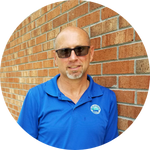
Tom Stanley
Public Services Director
Email
(910) 457-7935
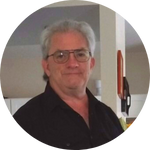
Paul ‘Ellie’ Pittenger
Electrical Superintendent
Email
(910) 457-7938

David Kelly
Vector Control, Mosquito
Email
(910) 457-7935

Mark Caban
Water Distribution ORC
Email
(910) 457-7935

Justin Taylor
Cross Connect/Backflow ORC
Email
(910) 368-3288

Mike Spicer
F.O.G. (Fats, Oils & Grease) Inspector
Email
(910) 457-7935

Kevin Alley
Garage
Email
(910) 368-3288
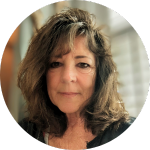
Jackie Smith
Department Administrative Assistant
Email
(910) 457-7935
2023 Southport Symposium featuring Public Services
Let us know how we are doing:
